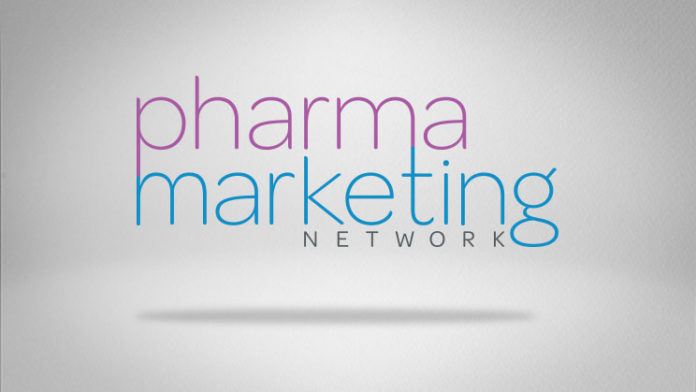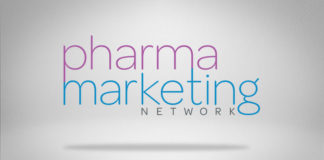Wednesday was another day spent at the ExL Digital Pharma conference in Princeton, NJ — and it was a day well spent!
I caught up with Marc Monseau, Director of Corporate Communications at J&J and editor of the JNJ BTW corporate blog. He spoke about using corporate blogs to get the whole story out to counteract the selective reporting by the media.
I also jousted with Marc in a point-counterpoint debate about whether or not the pharmaceutical industry should embrace Web 2.0.
Synergy Between PR and Marketing
I’ll get to the Marc’s presentation and our debate, but first let me say something about the presentation by Mike Boken, Senior Product Director at Shire. He spoke about creating synergy between PR and marketing in the context of Shire’s annual “ADHD Experts on Call” program that took place on September 19, 2007 (see Shire Press Release).
Normally, I am not a big fan of PR used in the service of marketing (see, for example, “Marketing Disguised as PR” and “PhRMA Intern vs. the Pharma PR Agency!“). Boken himself admitted that there are two types of marketers:
- those who believe PR is essential, and
- those who think it’s a waste of money
I don’t object to PR because it is a waste of money — on the contrary, I think it is very cost-effective (see article, reprint fee). I object to stand-alone PR whose only goal is to get products favorably mentioned in the media. That is what I call “marketing by other means” (op cit).
Shire’s use of PR had a different goal: drive people to a call center activity with a strong Web component in order to engage ADHD experts. It was a one-day event for which Shire also placed ads on major Web sites in an attempt to “own the Internet on that day.” The marketing goal was to sign up potential patients and caregivers for follow-up promotion of Aderall XR, their ADHD product at that time.
 Power of Celebrity Endorsement
Power of Celebrity Endorsement
A key component of the program was the use of a celebrity — Ty Penington, host of ABC’s popular “Extreme Makover: Home Edition” — who suffers from adult ADHD, which was an approved indication for Aderall XR. Since then, Shire replaced Aderall XR with Vyvanse, which is indicated for children diagnosed with ADHD. Today, Ty can only say “I wish I had this product when I was younger.”
It was interesting that the use of Pennington in media-rich Internet display ad significantly increased clickthrough rates by roughly 200-300%. On the other hand, Ty didn’t test well in print ads. I am not sure who the test market was — children or adult caregivers.
There was much more to this program — too much for me to cover here. I hope to cover Boken’s WHOLE STORY in more detail — including an ROI analysis — in an upcoming issue of Pharma Marketing News. So, stay tuned.
J&J Authenticity=Trust
Marc’s presentation focused on his experience as a blogger over at JNJ BTW blog. I and other bloggers in the Pharma BlogosphereTM have followed his progress closely (see here).
I think that Marc is “authentic” — a term that cropped up repeatedly during the conference. By that I mean he is very open and honest. I trust him and by extension, I also trust J&J — to a degree (let’s not get silly, OK?).
Note to other pharma communications directors: Trust … that’s a possible benefit of having a corporate blog. But, you need to follow Marc’s example.
Marc, coming from the “dark side” of journalism (and moving to what some would call the “darker side” of the pharmaceutical industry), presented this unique perspective on the evolution of the news media:
The many diverse news sources available today has led to the commodization of the news — even the WSJ will have to realize this and start delivering it’s product free online!
This has put pressure on media businesses to distinguish their news from other news. How do they do this? Through the rise of “reporters as personalities!” An example would be, I suppose, Wolf Blitzer on CNN. But I immediately thought of Peter Rost who took over reporting at Brandweek’s NRx blog. Rost is a “personality” who replaced a real journalist — Jim Edwards — who left Brandweek to study at the Columbia School of Journalist to become an even more real journalist! Now, the Brandweek strategy is perfectly clear to me when before I was confused (see “What’s Brandweek’s NRx Strategy?“)!
Anyway, Marc suggested this commodization of the news has lead to “infotainment” as opposed to real news. This so aptly described NRx that I almost fell out of my seat (note: Marc did not mention NRx in his presentation; I’m just projecting here).
This, in turn, has lead to “mistakes, mistakes, mistakes” and a loss of trust in the news media, says Marc.
The role of JNJ BTW then becomes to “correct” these mistakes, according to Marc. As an example, Marc cited a recent Businessweek cover story — Little Green Lies — which raises questions about whether being environmentally-friendly can be good business. Marc was pissed off (my phrase, not his) about the short-shrift given J&J in the story (for more on that, read Marc’s post: “The Business of Green“).
Marc wrote his blog piece after deciding that a letter to the editor, etc. would be ineffective, even if published. He could tell the WHOLE STORY of J&J’s green lifestyle via the blog, thank your very much.
Fun with Mack & Marc
The real fun, however, started when Marc and I teamed up to do our audience-participation point-counterpoint routine. It was such a great success that I am thinking of patenting it. But I’m afraid J&J might sue me, so I won’t!
Seriously, our shtick was to take opposite sides of the question: Should Pharma Embrace Web 2.0? I took the point, which argued “yes, full steam ahead” to every obstacle and Marc argued the “No, wait a minute” side.
To make it easy, I suggested that Marc and the audience consider me a Web 2.0 vendor with little pharma experience making a pitch to a brand team.
The following was the outline of how we saw this point-counterpoint “debate” unfolding:
Regulatory Compliance Issues
- POINT: It’s a no-brainer; it can easily be done. Take notes from Pfizer – have a dialog with FDA. If all else fails, don’t worry; FDA is not watching!
- COUNTERPOINT: The regulatory area is gray. No one wants to be the test case for an approach where the true value has yet to be quantified.
Transparency
- POINT: What’s the big deal? Just do it! There may be a thing or two you need to learn through trial and error, so get started now!
- COUNTERPOINT: There is little room for errors, especially when industry is under close scrutiny by regulatory and legal observers.
Organizational Issues
- POINT: Empower your internal advocates – your employees – to participate. Get buy-in from the top . There are some CEOs who write their own blogs!
- COUNTERPOINT: Yes — But it’s also a matter of education and cultural change.
Adverse Events, Off-Label, Fair Balance
One of the main fears pharma has about Web 2.0 is being responsible for the online publishing of adverse drug events, off-label uses of drugs, and mentioning of benefits without fair balance about risks.
It was interesting that Len Starnes, Head of eBusiness, Primary Care at Bayer Schering Pharma, AG, thought that the US was preoccupied with the disclosure of adverse drug events whereas in Europe and Asia where he works there is “no issue with reporting side effects.” In other words, just do it!
There were obviously many more issues discussed and I plan to write an article later for Pharma Marketing News where I can get into these in detail. Suffice it to say that the audience had so many questions and comments that we never made off the first slide! But we did manage to coverage all the above issues and more!









![6 Digital Tools at the Center of Healthcare Digitalization [INFOGRAPHIC]](http://ec2-54-175-84-28.compute-1.amazonaws.com/pharma-mkting.com/wp-content/uploads/2021/04/6DigitalTools_600px-100x70.jpg)




